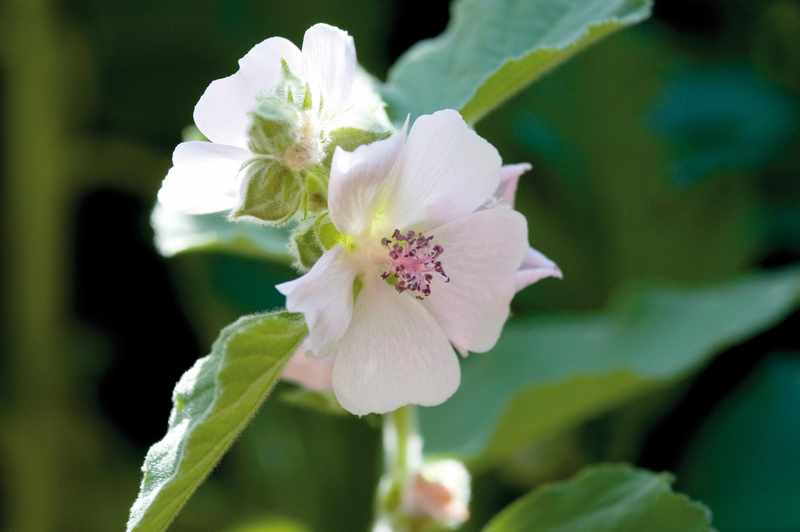
Generally found on waste land. This herb has thick downy leaves and pretty mauvish flowers which appear on clusters at the height of summer. Mallows are analgesic, antitussive, demulcent, diuretic, febrifuge, highly emollient, slightly laxative and odontalgic. Mallow or Hibiscus tea is well known in alternative medicine for its use as a demulcent to soothe throat inflammations and laryngitis, as an expectorant for coughs and bronchitis. It is used in the treatment of dysentery, lung ailments and urinary ailments. The tea is also taken for gastritis and enteritis or used as an enema for intestinal inflammations, and is an excellent laxative for young children. Used externally to wash wounds and sores or made into an emollient salve or poultice to soothe skin inflammations. The root is used as a toothbrush or pealed and given for teething children to chew. A decoction of the roots has been used to treat fevers and to reduce blood pressure. The seeds are also chewed as a nervine, stomachic and to sweeten the breath, also said to be aphrodisiac. Fragrant flowers are also used in potpourri.
Cautions and Side Effects
May slow the absorption of other medications taken at the same time.